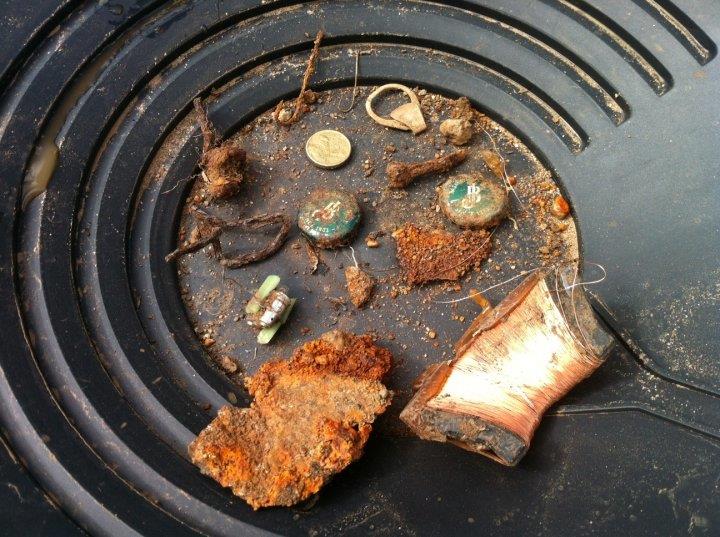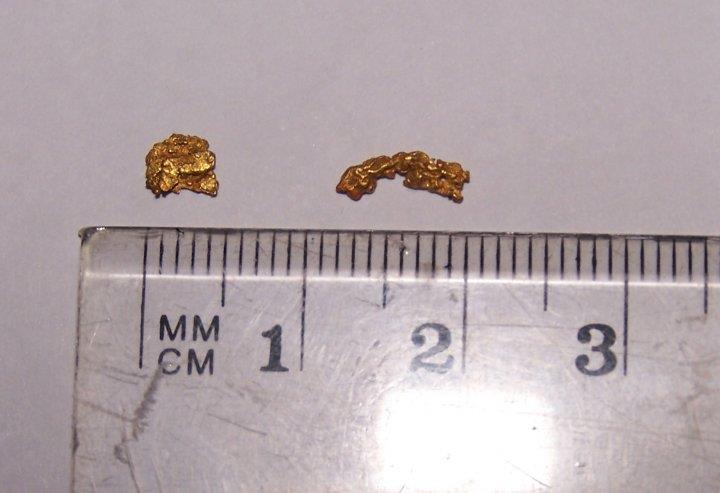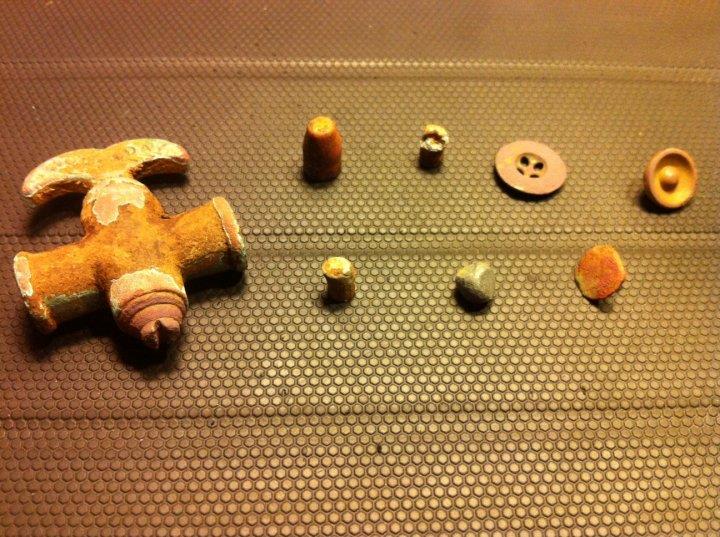Hey all,
I took my brand spanking Eureka Gold out for a practise swing today. Me and the kids first went to the local river, where I know gold has not been found but the idea was to get me and my ears used to what sort of sounds different targets will give off.
Here's what we can home with:

The site was basically full of trash, but I did learn the difference in sound the Eureka Gold puts out between a fish hook and a $2 coin I was pretty happy that it detected some pretty small stuff like the small fish hook.
I was pretty happy that it detected some pretty small stuff like the small fish hook.
It was fun playing with the 3 different frequencies and the ground balance settings. The kids had a lot more fun playing in the mud than watching dad having a swing. I did have a go at panning in the river, but even though there was plenty of small quartz, nada for the yellow stuff
After we had lunch we decided to try the local kid's playground for more practise. Well, I can say that my girls will never have to buy another bobby pin or hair clip Clearly the park has also been used by some of the local youths to sink a few bevvies from the amount of bottle tops I found as well. But on the positive side I did find a couple of $2 coins, what looks like the end of a brass pendant and also a small sterling silver charm.
Clearly the park has also been used by some of the local youths to sink a few bevvies from the amount of bottle tops I found as well. But on the positive side I did find a couple of $2 coins, what looks like the end of a brass pendant and also a small sterling silver charm.
By the end of it I could distinguish between a bobby pin, pice of tin foil and a solid object without having to dig them out, so it was a good practice day.
I reckon I'm ready to practice on the goldfields now, so I think we're heading to O'Briens Crossing on Anzac Day. Then hopefully the GT next weekend. Can't wait to get me some colour
John
I took my brand spanking Eureka Gold out for a practise swing today. Me and the kids first went to the local river, where I know gold has not been found but the idea was to get me and my ears used to what sort of sounds different targets will give off.
Here's what we can home with:

The site was basically full of trash, but I did learn the difference in sound the Eureka Gold puts out between a fish hook and a $2 coin
It was fun playing with the 3 different frequencies and the ground balance settings. The kids had a lot more fun playing in the mud than watching dad having a swing. I did have a go at panning in the river, but even though there was plenty of small quartz, nada for the yellow stuff
After we had lunch we decided to try the local kid's playground for more practise. Well, I can say that my girls will never have to buy another bobby pin or hair clip
By the end of it I could distinguish between a bobby pin, pice of tin foil and a solid object without having to dig them out, so it was a good practice day.
I reckon I'm ready to practice on the goldfields now, so I think we're heading to O'Briens Crossing on Anzac Day. Then hopefully the GT next weekend. Can't wait to get me some colour
John





